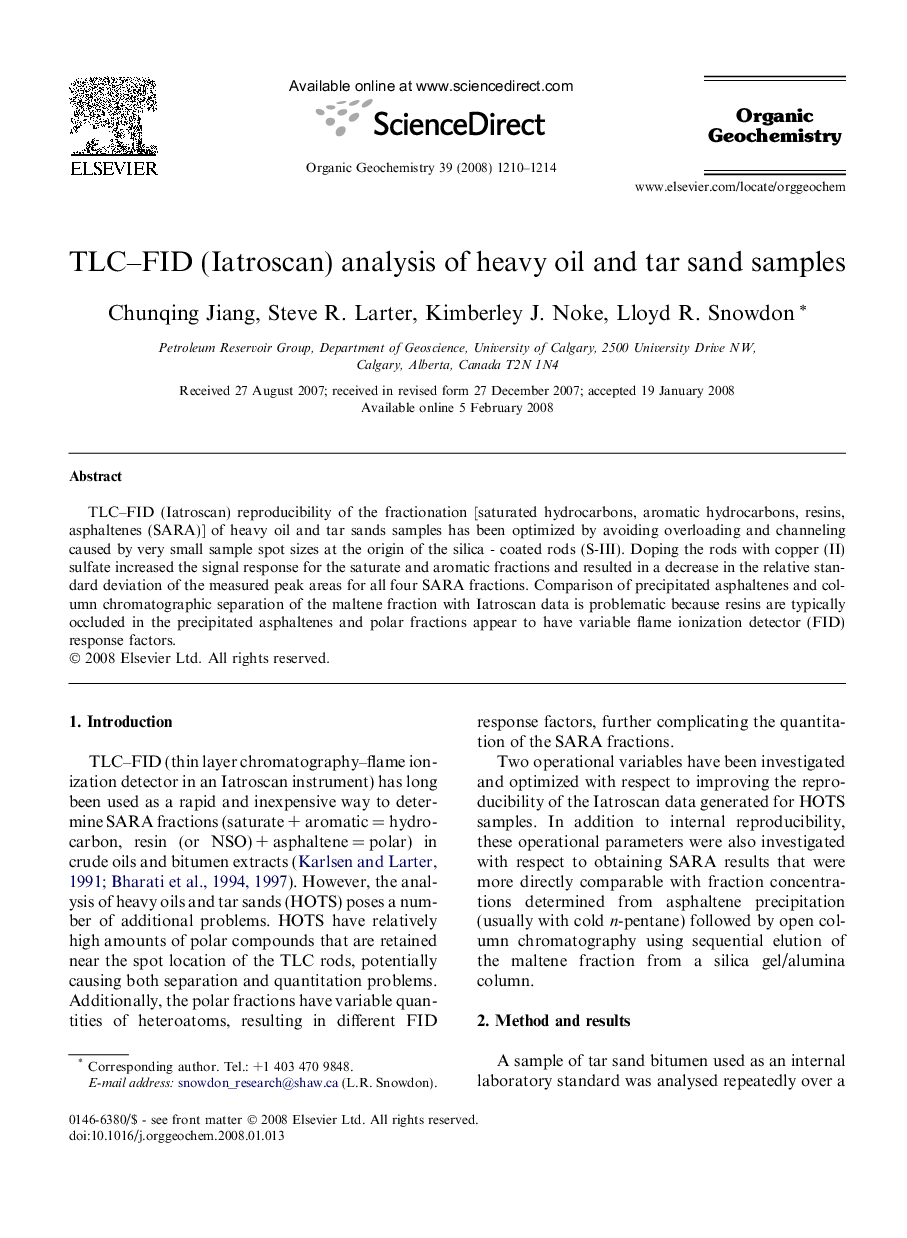| Article ID | Journal | Published Year | Pages | File Type |
|---|---|---|---|---|
| 5162025 | Organic Geochemistry | 2008 | 5 Pages |
Abstract
TLC-FID (Iatroscan) reproducibility of the fractionation [saturated hydrocarbons, aromatic hydrocarbons, resins, asphaltenes (SARA)] of heavy oil and tar sands samples has been optimized by avoiding overloading and channeling caused by very small sample spot sizes at the origin of the silica - coated rods (S-III). Doping the rods with copper (II) sulfate increased the signal response for the saturate and aromatic fractions and resulted in a decrease in the relative standard deviation of the measured peak areas for all four SARA fractions. Comparison of precipitated asphaltenes and column chromatographic separation of the maltene fraction with Iatroscan data is problematic because resins are typically occluded in the precipitated asphaltenes and polar fractions appear to have variable flame ionization detector (FID) response factors.
Related Topics
Physical Sciences and Engineering
Chemistry
Organic Chemistry
Authors
Chunqing Jiang, Steve R. Larter, Kimberley J. Noke, Lloyd R. Snowdon,
